What is a living wall? A living wall, also known as a bio wall, combines plant life with a forced air system to enhance air quality. These installations allow air to be blown or drawn through the living wall, increasing air contact and humidification.
 Curious about soil weight?
Curious about soil weight?
The weight of soil varies based on its moisture content. Wet soil can weigh around 3000 lbs per cubic yard or approximately 74 lbs per cubic foot, while dry soil weighs approximately 2000 lbs per cubic yard or 110 lbs per cubic foot. However, soil weight can differ based on factors such as organic content, sand content, compaction, and other variables.
Concerned about living walls damaging the wall behind them?
The impact on the wall depends on how the living wall is built. If an outdoor permeable living wall system is installed indoors without a waterproof backer, it can potentially damage the wall. It’s crucial to include a capillary break to prevent moisture wicking and ideally incorporate an air gap to avoid moisture buildup on the wall. Another approach is to design the wall behind the living wall to be waterproof, similar to a shower.
Do living walls encourage mold growth?
If the soil and plants in a living wall are healthy, mold problems should not arise. Mold can occur on walls if there is insufficient waterproofing and no air gap between the living wall and drywall. Proper design and maintenance can help prevent mold issues.
Wondering why the new leaves on your variegated plant are green?
Variegation in plants often indicates a mutation in green plants. When the plant receives insufficient light, it produces greener leaves with more chlorophyll to compensate. To restore variegation, consider moving the plant to a brighter location or adding artificial light.
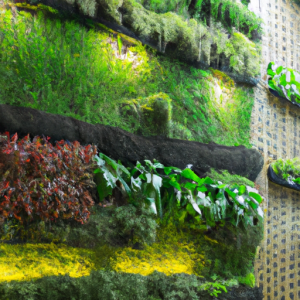 Can you use a desk lamp for plants?
Can you use a desk lamp for plants?
Desk lamps can be an excellent option for providing additional light intensity to plants in areas with limited natural light. However, it’s important to select the right type of bulb that offers the appropriate spectrum for plant growth. Specific grow lights designed for plants may be more suitable in certain cases.
Looking for tips on selecting plants for a living wall?
Opt for a diverse selection of plants that match your environment. For example, tropical plants work well indoors. Monitor their growth and observe which plants thrive and which ones struggle. Focus on adding more of thriving plants to your living wall. It is advised to consider their adaptability to vertical growing conditions, light requirements, and maintenance needs. Here are some of the best plant options for a thriving living wall:
- Pothos (Epipremnum aureum): A popular choice for its trailing vines and air-purifying qualities.
- Spider Plant (Chlorophytum comosum): Hardy and adaptable, with long arching foliage that creates an attractive cascading effect.
- Peace Lily (Spathiphyllum): Known for its elegant white flowers and ability to filter indoor air.
- Boston Fern (Nephrolepis exaltata): Lush and feathery foliage that thrives in humid conditions.
- English Ivy (Hedera helix): Versatile and fast-growing, with cascading vines that create a beautiful green backdrop.
- Snake Plant (Sansevieria): Low-maintenance and known for its architectural upright leaves, making it ideal for vertical installations.
- Asparagus Fern (Asparagus setaceus): Delicate and wispy foliage that adds a soft texture to the living wall.
- Sedum varieties: Drought-tolerant and ideal for outdoor living walls, as they can withstand harsh conditions.
- Baby’s Tears (Soleirolia soleirolii): Tiny leaves that form a dense, carpet-like appearance, creating a lush effect.
- Philodendron varieties: These tropical plants come in various shapes and sizes, adding a touch of exotic beauty to your living wall.
Interested in mounting a living wall frame?
When mounting a living wall frame, ensure it is waterproof to prevent damage to the wall. Consider mounting it to the studs for stability and avoid moisture transfer between the planter and the wall. A proper capillary break and waterproof design are essential.
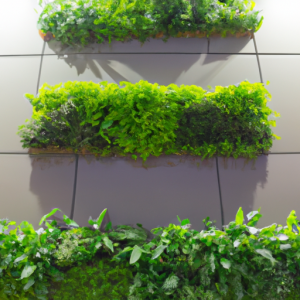 Are living walls high maintenance?
Are living walls high maintenance?
Living walls can be low maintenance if set up correctly. Choose resilient, low-maintenance plants and provide adequate growing medium to retain moisture. Some living walls can go several weeks without watering. Sub-irrigation systems can further reduce maintenance efforts.
Do living walls attract bugs?
Plant health is the primary factor in preventing bug infestations in living walls. Healthy plants have natural defenses against insects. Avoid over-watering, as it can weaken plants and make them more susceptible to pests. Carefully inspect new plants before introducing them to the living wall to prevent the spread of pests.
Concerned about moisture problems with living walls?
Proper design and installation can prevent moisture issues. It’s crucial to have a moisture barrier between the wall and the living wall system. The growing medium should have a waterproof backing, and an air gap can be incorporated to ensure proper ventilation and prevent moisture buildup.
Wondering if ferns can thrive on a living wall?
Ferns can indeed thrive on living walls, provided they receive sufficient moisture and humidity. Certain varieties, such as sword fern and bird’s nest fern, tend to fare better. However, it’s advisable to avoid maidenhair ferns unless the humidity levels are adequately high.
Looking for ways to increase humidity for your plants?
There are various options available. You can mist the plants with water using a spray bottle, place a tray of water near the plants, or use a humidifier. These methods can help create a more favorable humid environment for your plants.
When is it necessary to remove a plant from a living wall?
There are a few reasons for removing plants from a living wall. If you want to change the aesthetics, cycling plants can keep the wall fresh and healthy. Plants that are declining or dead should be removed to prevent the spread of decomposing microorganisms. Additionally, if certain plants are overgrown and out-competing others, it may be necessary to remove them to maintain a balanced ecosystem.
Interested in hanging plants without saucers?
If your pots don’t have drainage holes, be cautious with watering to prevent overwatering. Choose plants and soil that can tolerate moister conditions. Consider using pots made from porous materials like unglazed clay, as they allow for better airflow and drainage.
Looking for suitable pot setups for hanging plants?
Hanging wicker baskets with a lining bag can be a practical choice. Place stones at the bottom of the bag to provide drainage and prevent water stagnation. This setup ensures that excess water is contained while keeping the soil above the water level to prevent rotting.
How to effectively dust plants?
Dust buildup on leaves can block sunlight and hinder plant growth. Gently wiping the leaves with a damp cloth, towel, or sponge can effectively remove dust. Take the time to clean each leaf individually for the best results. Additionally, regular sweeping or vacuuming in the surrounding area can help minimize dust accumulation.
Seeking plant recommendations for small apartments?
In small apartments with limited space and light, certain plants thrive better than others. Consider low-light tolerant options like golden pothos, hoya, spider plants, snake plants, succulents (if there is ample light), and ZZ plants. Additionally, vertical gardens or hanging plants can be ideal solutions for maximizing space.
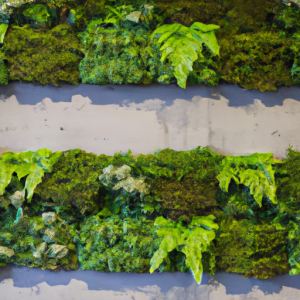 Curious about tropical plants blooming?
Curious about tropical plants blooming?
Blooming in tropical plants can be influenced by various factors. Some plants may bloom under stress, while others require optimal conditions. Factors such as light levels, water availability, and specific plant species can impact blooming patterns. Blooming generally indicates that the plant is healthy and has reached the stage of reproductive maturity.
Planning to re-pot a large houseplant?
Start by removing excess soil from the top and gently tilting the plant to ease it out of the pot. If the root ball is firmly stuck, lightly moistening it can help loosen the soil. Assess whether the plant can be divided, depending on its type. Repot using a mixture of existing and new soil, maintaining the plant’s original depth. Compact the soil gently to stabilize the plant and water it thoroughly.
How do living walls mimic nature?
Living walls, inspired by nature, embrace biomimicry in design. By emulating plants that grow on vertical surfaces like trees or cliffsides, living walls provide a more natural environment. Vertical surfaces offer better airflow, improved
light exposure, and enhanced drainage compared to horizontal surfaces. Mimicking nature, living walls create a microcosm of plant life that closely resembles plants growing in their natural habitats.
Considering the solar orientation in architectural design
Architects harness the power of sunlight to influence their designs. They analyze the site, climate, geography, wind patterns, and the path of the sun. Architects strategically manipulate sunlight to:
- Absorb it: Utilize building materials and surfaces that absorb sunlight, helping to heat the space naturally.
- Block it: Incorporate shading devices such as overhangs, sunshades, or awnings to prevent excessive heat gain.
- Filter it: Use screens, louvers, or brise soleil to filter sunlight, allowing desired levels of illumination while reducing glare.
- Consume it: Employ solar panels or other solar energy systems to convert sunlight into usable energy.
- Store it: Utilize materials that can store solar heat and release it slowly, improving energy efficiency.
- Reflect it: Employ reflective surfaces or materials to redirect sunlight and enhance natural lighting within a space.
Architects employ tools like overhangs, sunshades, and other design elements to control the impact of sunlight throughout the year. By carefully considering solar orientation, architects strike a balance between optimal natural light, privacy, views, and functional requirements, creating spaces that are comfortable and energy-efficient.
Architects continually assess the sunlight’s intensity and angle to optimize the design, incorporating living elements such as living walls to enhance seasonal variations. For example, in regions with colder winters, living walls can be utilized to filter sunlight through leaves during the summer while allowing more direct sunlight penetration during the winter months.
Ultimately, architects aim to create harmonious spaces that maximize natural light, respect the environment, and improve the overall well-being of the occupants.
Concerned about sunlight overheating spaces, architects implement strategies to mitigate excessive heat. Horizontal elements, such as shading devices, are designed to prevent direct sunlight from entering and heating up interior spaces. By carefully considering the angle and intensity of the sun, architects can determine the optimal placement and dimensions of these shading elements.
Architects also take advantage of the low angle of the sun during winter months to allow more sunlight into spaces, providing natural warmth and reducing the need for artificial heating. This approach creates a balance between optimal lighting, energy efficiency, and occupant comfort throughout the year.
By studying the sun’s path and understanding its impact on different building orientations, architects can harness its power to create sustainable, well-lit, and environmentally responsive designs. The utilization of natural light not only reduces energy consumption but also enhances the overall aesthetic and livability of the built environment.
Incorporating biomimicry and solar considerations, architects strive to create spaces that harmoniously coexist with the natural world while meeting the functional and aesthetic needs of the occupants. Through their expertise in utilizing sunlight, architects play a pivotal role in shaping sustainable and energy-efficient designs that benefit both individuals and the environment.
Architects further integrate sunlight into their designs by considering the psychological and physiological effects of natural light on occupants. Sunlight has a profound impact on human well-being, influencing mood, productivity, and overall comfort. By incorporating ample natural light through the strategic placement of windows, skylights, and light wells, architects create spaces that promote a sense of openness, connection to the outdoors, and a positive indoor environment.
To achieve the most effective use of sunlight in their designs, architects employ advanced technologies such as daylight modeling and computer simulations. These tools allow them to accurately predict the sun’s position and trajectory, enabling precise placement of windows, shading devices, and other light-controlling elements.
By embracing the sun as a powerful design tool, architects create spaces that are visually captivating, energy-efficient, and conducive to human well-being. Through thoughtful consideration of sunlight and its integration into architectural design, architects shape environments that inspire, uplift, and harmonize with the natural rhythms of the day.
Architects also explore innovative materials and techniques to optimize the utilization of sunlight in their designs. Light-diffusing materials, such as translucent panels or glass with specialized coatings, are employed to evenly distribute natural light while minimizing glare and harsh shadows. These materials enhance the visual comfort of occupants and create a pleasant ambiance within the space.
Many architects leverage daylight harvesting strategies to maximize the benefits of natural light. This involves utilizing sensors and smart lighting systems to automatically adjust artificial lighting levels based on the available daylight. By seamlessly blending natural and artificial lighting, architects achieve energy-efficient lighting solutions that respond dynamically to changing daylight conditions.
In sustainable architecture, passive solar design principles are integrated to harness the sun’s energy for heating and cooling purposes. Through careful orientation, insulation, shading, and thermal mass considerations, architects can optimize the building’s energy performance, minimizing reliance on mechanical systems and reducing carbon footprints.
Innovative architectural projects are also exploring the concept of solar architecture, where building facades incorporate solar panels and photovoltaic systems as integral elements. These solar-integrated designs generate clean energy while simultaneously acting as shading devices or providing aesthetic enhancements.
The continuous evolution of solar technologies, coupled with the creative vision of architects, enables the seamless integration of sunlight into the built environment. By embracing the sun as a sustainable resource and utilizing it as a design driver, architects contribute to the creation of spaces that are environmentally responsible, visually captivating, and promote the well-being of occupants.
Architects recognize the transformative power of sunlight in architectural design. By harnessing its potential, they create spaces that are responsive, energy-efficient, and human-centric. Sunlight becomes a guiding force, shaping the form, function, and experience of architectural spaces, ultimately enhancing the quality of life for those who inhabit them.
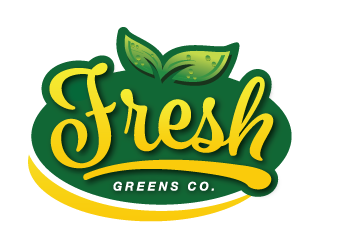

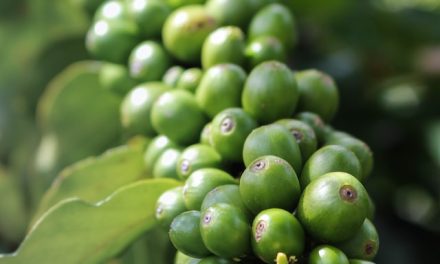











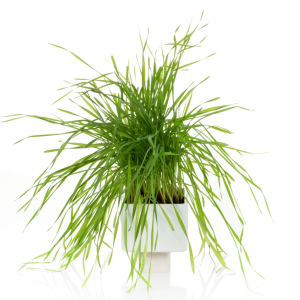

As an architect, I’m always looking for ways to incorporate more greenery into my designs. This article was a fantastic resource. The insights on how living walls mimic nature were enlightening.
What a comprehensive guide! The part about the potential of mold growth and how to prevent it was especially helpful. Safety first!
I’ve been a gardener for years but never ventured into living walls. This piece has convinced me to give it a try. The benefits are just too great to ignore!
This article is a goldmine! I never knew there was so much to consider when it comes to living walls. The architectural perspective was an unexpected bonus.”
After reading this, I feel so much more confident about introducing a living wall into my home. The tips on plant selection and maintenance are invaluable. Thanks for sharing!
Such an insightful read! I’ve been curious about living walls for some time now, and this article answered all my questions. Especially appreciated the details on soil weight and plant choices